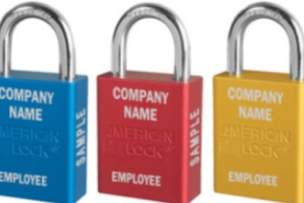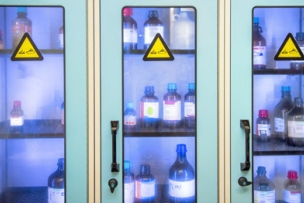Keeping a first-aid training program up to date is just one step in meeting OSHA first-aid safety requirements.
Providing prompt first aid can save lives and reduce the severity of injuries after workplace accidents. But preparing for emergencies means more than just providing first-aid supplies and occasional training. It also means developing a first-aid training program and keeping it up to date.
The Occupational Safety and Health Administration (OSHA) requires that employees be given “a safe and healthy workplace that is reasonably free of occupational hazards.” In some cases, such as in an office environment, that may mean providing a first-aid kit; in others, it may mean providing more extensive supplies and training workers in both first aid and CPR. The number and type of personnel and supplies required, and the amount of training employees need, varies depending on the hazards in the workplace. Here’s what you need to know.
OSHA’s First-Aid Training Requirements
Under the general duty clause, OSHA requires employers to provide a workplace free from recognized hazards likely to cause serious injury or death. But since accidents do happen, OSHA also requires employers to provide trained personnel and first-aid supplies when a medical facility is not close by.
In Standard 1910.151 Medical and First Aid, OSHA says employers shall:
- Ensure adequate first-aid supplies are readily available
- Provide flushing stations when the eyes or body of a worker might be exposed to corrosive materials
- Ensure the availability of medical personnel for advice and consultation
- Train a person or multiple people in first aid if there is not an infirmary, clinic or hospital nearby
“While the standards do not prescribe a number of minutes, OSHA has long interpreted the term ‘near proximity’ to mean that emergency care must be available within no more than 3-4 minutes from the workplace,” Richard Fairfax, OSHA director of enforcement, wrote in a 2007 letter of interpretation.
In addition, general industry workplaces that are not within 3-4 minutes of a hospital, clinic or infirmary must have an employee trained in CPR if the workplace contains hazards that could present life-threatening injuries, says CPR Consultants. If the worksite does not contain hazards that could present life-threatening injuries, the hospital, clinic or infirmary can be up to 15 minutes away.
“Legal teams can run circles around the phrase ‘workplace hazards that could cause life-threatening injuries,’” the organization says. “That could include ladders, staircases, sharp blades, forklifts and loading docks, slippery floors, etc.”
Employee Training in CPR and First Aid
OSHA’s standards for first-aid training are broad, says Jessica Davis, an associate content editor, in an article for Occupational Health & Safety magazine.
“The 1910.151 standard does not name any particular training program or level of expertise for first-aid compliance,” she says. “Instead, more specific training requirements are named in several standards that address permit-required confined spaces, commercial diving operations, logging operations, electric power, shipyard employment, and construction. These industries require more specific standards because of their specialized nature.”
For instance, although CPR training is not required for most manufacturers, employees who work in permit-required confined spaces must be trained in both first aid and CPR, says CPR Consultants.
In its “Best Practices Guide: Fundamentals of a Workplace First-Aid Program” publication, OSHA says, “First-aid courses should be individualized to the needs of the workplace.” That means evaluating your workplace and determining which safety hazards your employees are most likely to face.
In addition, OSHA says employees should be retrained periodically.
“First-aid responders may have long intervals between learning and using CPR and AED skills. Numerous studies have shown a retention rate of 6-12 months of these critical skills,” the agency says in its “Best Practices” guide. “The American Heart Association’s Emergency Cardiovascular Care Committee encourages skills review and practice sessions at least every 6 months for CPR and AED skills. Instructor-led retraining for life-threatening emergencies should occur at least annually. Retraining for non-life-threatening response should occur periodically.”
“When it comes to how often should we update our training programs, it’s important to separate out what the content is from how often the training is offered,” says Robb Rehberg, program development director for first aid at the National Safety Council (NSC). “The third part of that is how often you practice using that training in your own specific work environment.”
Rehberg says companies should consider practicing emergency scenarios on a regular basis, or offering microlearning, such as email tips or reminders included with pay stubs, to make sure employees remember key techniques and information.
Want to see more about first-aid training visually? See our infographic: “The Need for First-Aid Training in the Workplace.”
First Aid and CPR Program Renewal Guidelines Renewing a First-Aid Training Program
Just as employees need to update their training, a first-aid training program itself needs to be regularly updated as well.
“The first-aid program should be reviewed periodically to determine if it continues to address the needs of the specific workplace,” says OSHA in the “Best Practices” guide. “Training, supplies, equipment and first-aid policies should be added or modified to account for changes in workplace safety and health hazards, worksite locations and worker schedules since the last program review.”
Rehberg says that guidelines issued by the American Heart Association (AHA), American Red Cross (ARC) and other organizations used to be updated every five years. However, the last update in 2015 came with an announcement that guidelines would be updated continuously.
“If treatment recommendations and guidelines are changed, they can be published and disseminated quickly so that people who are providing first aid and the victims they serve have the benefits of that updated information sooner,” Rehberg says. “So that’s left training programs like ours and others to really decide when we believe that our programs need to be updated.”
In addition to updating the training program with current first-aid techniques and knowledge, employers renewing their programs should also replace outdated training and reference materials, says OSHA.
In an appendix to the Medical and First Aid standard, the agency suggests that employers use their injury logs or similar reports to help identify the unique problems their workplace faces.
“Consultation from the local fire/rescue department, appropriate medical professional, or local emergency room may be helpful to employers,” says OSHA in the appendix. “By assessing the specific needs of their workplace, employers can ensure that reasonably anticipated supplies are available.”
Rehberg says organizations like the AHA, the ARC and NSC all offer resources for companies developing or updating emergency medical response plans.
“We really think it needs to be customized based on the likelihood of injury and the number of people trained and the level to which you’re going to expect that they respond,” he says.
How often do you update your workplace first-aid training program?





Talk to Us!
It's interesting to know that renewing first-aid training can rely a bit on whether the learning program has changed. I'm thinking about getting first-aid classes soon in order to learn something productive during my free time during weekends. If I find a career someday where that skill could be at the forefront, I will definitely start making sure that I renew my training once in a while.
http://www.40cpr.com/
21We are wanting to do an in-person class. Is this still possible? We are looking for CPR/AED training.
18Hi Nancy,
Given the environment, we'd imagine some classes are virtual only, while others are in-person. Companies have gotten creative and found safe ways to facilitate both types. You can do a local search online to see what is available that fits your needs. Good luck!
21I like when you said a safe and healthy workplace is reasonably free of occupational hazards. There is a level 3 first aid course training here in Trail, BC, that might help us whenever we need medical assistance someday. We are not so accessible in commercial hospitals, so whenever someone has an emergency injury, it would be hard for us to call for help.
35Leave a reply
Your email address will not be published. Required fields are marked *